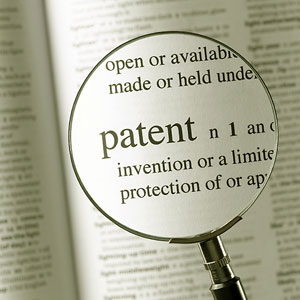Patents: Is There One Lurking in Your Company?

A patent is the protection given to an inventor by a government, including the United States, in order to prohibit other people or companies from making, using, or selling the invention. The main purpose behind the granting of patents is to protect inventors and their inventions, but it is widely recognized that patents provide incentives for businesses to invest in research and development, knowing that there is a potential of having the market to themselves for some period of time.
Business owners should think before deciding to pursue a patent. First, they need to determine whether the patent is a viable one and if it is worth protecting. Any patent office requires that the patentable product have an element of novelty. Accordingly a patent search needs to be conducted to see if someone else has either patented the same invention or has a patent pending. This type of search can save the inventor from filing an application for a patent that already exists, saving both time and money. If there is no conflict, then the inventor should seek professional advice on whether the invention is patentable by either the United States Patent and Trademark Office (USPTO) or a foreign patent office, if there is an intention to market or produce the product overseas. The process of applying for a patent is complicated and most inventors hire a patent expert to file the application. Finally, patent experts also help inventors determine whether their invention is patentable, or whether the USPTO will consider the invention for a patent. In the United States, patents are only applicable to a process, a machine, an article of manufacture, or composition of matter. To spot patents in your business, owners should consider whether their business utilizes a novel process in manufacturing a certain good, or has invented a new form of machinery. The USPTO also allows patents on any improvement of a process, a machine, an article of manufacture, or composition of matter. Such improvements can very easily go unpatented, as businesses may neglect minor improvements they might have made to a pre-existing process or machine. Over time, minor improvements on a process or machine might pile up significantly, enough to make it economically feasible and even advisable to apply for a patent.
The USPTO also provides guidance on what cannot be patented. Importantly, the USPTO does not issue patents for literary, dramatic, musical, or artistic works. These works are protected by the United States Copyright Office. The USPTO also does not issue patents for inventions that are not useful or are offensive to public morality. Patent experts can help a business determine whether the above categories apply to their invention. There is also a short window of time after an invention, in which patents can be filed, so inventors must be alert to avoid missing the filing deadline.
In determining whether filing a patent application is economically advisable, the inventor or company must weigh the costs of obtaining patent protection versus the advantage of owning the sole right to produce, market, license, and sell an invention. However, as advantageous as owning a patent may be, the process of acquiring one and maintaining it over a span of years is expensive and time-consuming. Inventors are required to pay a nonrefundable filing fee to the USPTO. This fee covers the cost of examining the patent application. If the USPTO decides to grant the patent, the inventor will also need to pay an issuance fee, which will only protect the invention for a certain number of years, after which the patent can be renewed with a maintenance fee. Each country issues patents, so for products sold globally, patent protection would need to be pursued in each country where it is needed. This can certainly add up when you consider the number of countries in Europe and Asia. Moreover, in some industries, such as fashion, the invention may become obsolete by the time the patent is finally granted. The inventor should also consider the expense of enforcing a patent once it is granted. Patent infringement cases are costly and can take years to work their way through the legal system.
So although the idea of holding a patent may seem attractive initially, the process, time, and cost should be carefully considered in light of the ultimate benefits.
Business Insights is hosted by the Law Firm of Kumar, Prabhu, Patel & Banerjee, LLC. Sonjui L. Kumar is a corporate, transactional attorney and a founding partner of KPPB Law. Viraj Deshmukh is a third year law student at Georgia State University Law School.
Disclaimer: This article is for general information purposes only, and does not constitute legal, tax, or other professional advice.
Enjoyed reading Khabar magazine? Subscribe to Khabar and get a full digital copy of this Indian-American community magazine.
blog comments powered by Disqus












